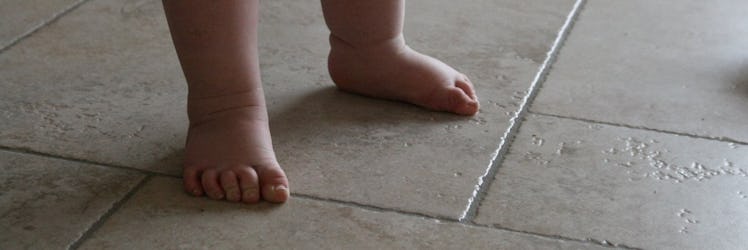How To Promote Baby Cruising, The Transition Between Standing And Walking
Wherein you're actually encouraged to dangle their toys just out of reach.

Cruising is the technical term for the transition between standing and walking. In layman’s terms, it’s that wobbly, sideways standing shuffle your kid will soon be doing while clinging to anything that’ll support them — or what you used call Friday night. Just as college benders were a stepping stone toward you becoming a full-fledged human, so too is cruising a milestone on your baby’s journey. Sorry. Bad analogy. Moving on. Cruising on.
Cruising activity usually occurs around 11 months…ish. While this phase of locomotion occurs fairly naturally, there are a few ways you can help promote and ease your little stumbler’s transition. First, like your trainer tried to tell you when you went for that session once, working the core is key. Essentially, that means you’re about to become something of a baby pilates instructor, helping them stand but supporting them low on the waist so they at least need to work to be stable. You can do this while they stand on your lap or get yourself down to their level.
You also want to make sure your have plenty of low surfaces where your kid can stand and support themselves with extended arms. Once they’re ready to begin moving, encourage them by placing toys on the surface, just out of their reach. Pointing and laughing as they try to reach them is optional, although probably not super encouraging.
Once they have cruising down, you might be tempted to get your kid walking faster with a pushable object like a little stroller they can lean on for practice. Slow your stroll, homie. All you’re doing is shifting your kid’s center of mass forward, potentially leading to sway-back and toe-walking in the future, and face-planting in the present. Your best bet is to stick with your couch’s ottoman, as long as it’s willing to be slobbered on.
This article was originally published on